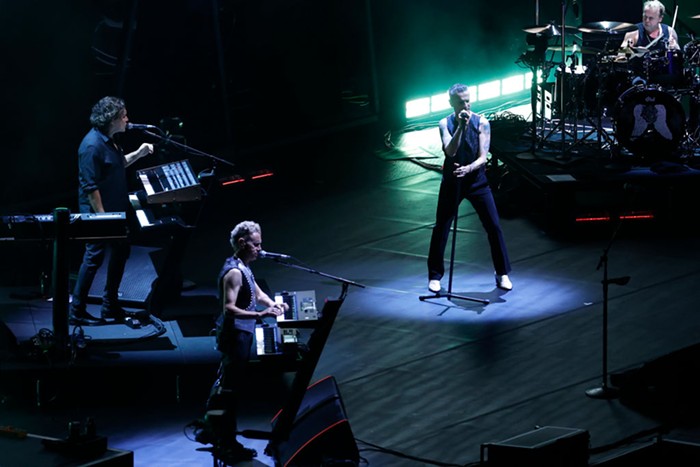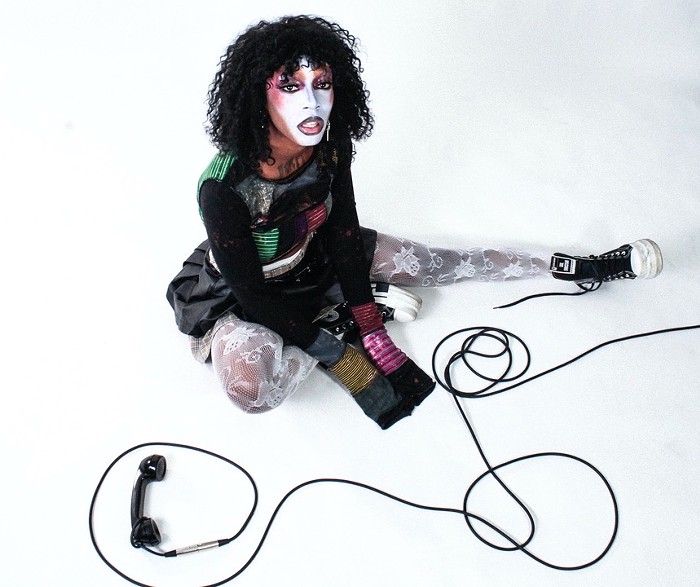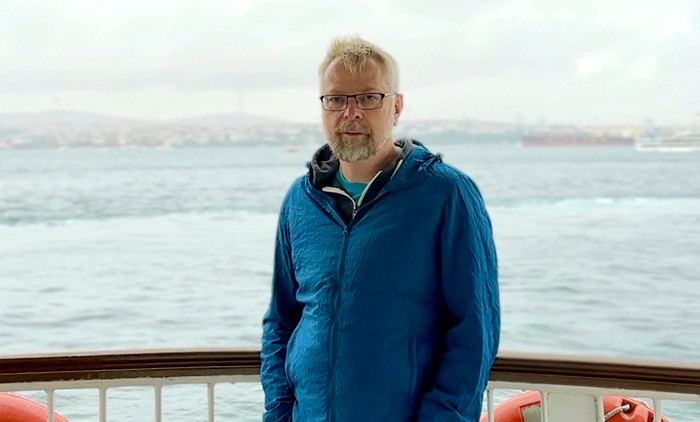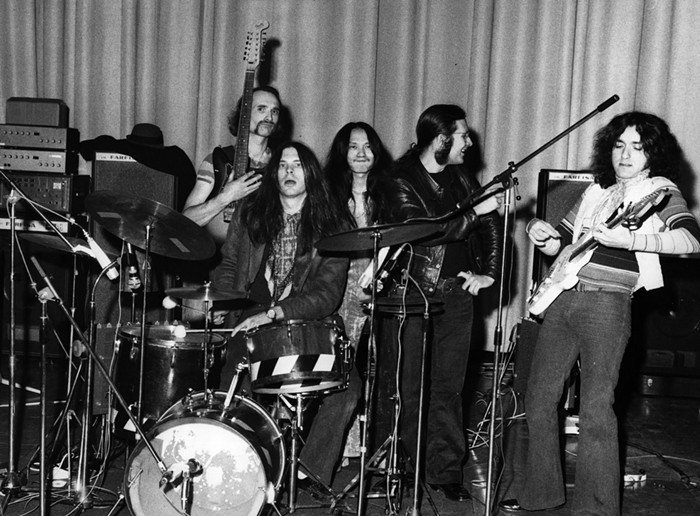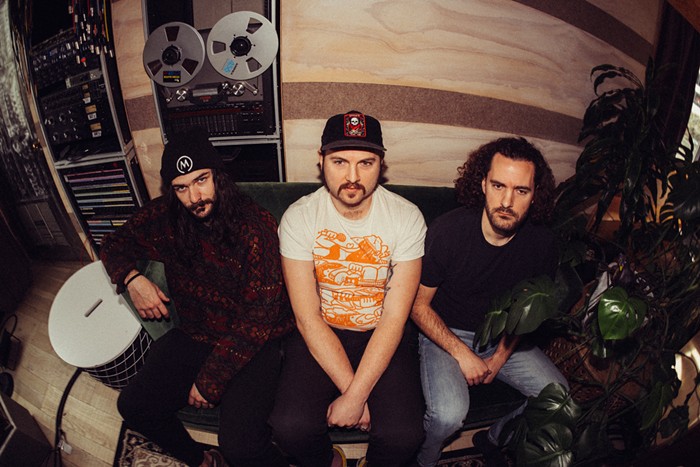w/the Blood Brothers, Shoplifting, Akimbo (Fri Feb 13)
Vera Project, 8 pm, $9 ($8 w/club card), all ages.
Kill Me Tomorrow are escapees from the planet Art Explosion, beaming in on a strobe light to project their alien visions on the world of no wave. The San Diego trio--bassist K8 Wince, her husband, drummer/guitarist/knob-twiddler Zack Wentz, and guitarist Dan Wise--have an attention to futuristic detail that permeates everything they create.
Wince is also a visual artist, and her imagination is splattered across KMT's EPs and new debut full-length, The Garbageman and the Prostitute (GSL), which was recorded in a temporary home studio. She makes apocalyptic, endearingly ghoulish scenery for the band's scattered-beat, sci-fi distractions, and designs the band's unusual asymmetrical shirts. Wentz is a writer who sees The Garbageman and the Prostitute as a multimedia project: It's both a CD and a DVD and he's written a novel suturing the schizophrenic short stories in songs like "The Best Siren Is a Flesh Siren."
Sonny Kay, head honcho over at the visionary, underground San Diego label GSL (Gogogo Airheart, Le Shok, the Vanishing), says of the band, "They aren't simply another band on the treadmill, cranking out white T-shirts and letting someone at the label deal with the hands-on stuff. Most bands are jobs; their band is an art project." Kay has been working with KMT for more than two years, and says, "There is a rare degree of commitment and passion that goes beyond simply devoting themselves to their creativity. Few other bands on the label (or anywhere else) come with such a developed, succinct idea of what they are and how they want to be presented."
KMT first came together in 1997 when Wentz and Wince were living in Portland, and the band was more of an "arty twee pop" project. "We wanted to tour as an excuse to travel, and it's easier to tour with a band than to tour as a painter or writer," he explains. "From there we were able to sculpt a master vision. There are a lot of different mediums and the band just happens to be a place where it all comes together. The overall aesthetic matches because we've been so focused."
Even within the band, the wires cross very specifically between various sonic elements, creating a marriage of organic and robotic noise that fuses into a unique universe of sonic dementia. Wentz delivers stories about an alternate America haunted by a looming mad scientist, the electronics behind him scrambling like a cassette getting eaten by a stereo or squealing like worn brake pads. Intermittently, he uses what he calls a "cocktail kit," a scaled-down drum setup that he plays while triggering drum machines and effects processors. "We wanted to incorporate technically advanced elements but keep it wild and primitive as well," he says. Wince's bass and Wise's guitar push the collaborations, warped out of their original structure by an array of different pedals, further to the fringes.
With GSL KMT found a good home because, Wentz relays, "There's an anything-goes feel. About the only thing that seems to be consistent at GSL is that more of the bands have a more dark, damaged view on things, which is something we can relate to."
Overall, Wentz thinks it's an exciting time for art-skewed bands. "There's a lot of diversity and freedom with music now," he says. "There was one point when that was really frowned upon. It was like, if it's too immediately entertaining, it's below what intellectual punk rock music should be. It shouldn't be dancy. And then people started to say, 'Fuck it, the coolest thing you can do is make an interesting rhythm and start layering shit over the top of it.' I think that liberated a lot of people."

